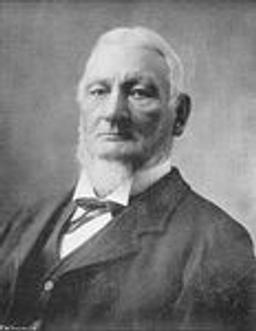John Williams
Vessel Name: Venus
John Williams
Venus
23 April 1851
Died aboard wreck, body recovered

Captain John Thomas

Plans of Venus. Courtesy of G & K Henderson
Venus was built as a 20 ton jarrah cutter in 1839 by Captain John Thomas at Swan River Settlement. She was built with iron fastenings and a square stern. Her dimensions were 10 x 3.7 x 1.9 metres. Three years later her hull was copper sheathed to prevent ship worm, barnacles and algae growth. The coast of WA was not conducive to a healthy hull. Pearlshelling and fin fishing north of Champion Bay [Geraldton] meant more coastal traders to supply the fishing settlements along the coast. There was no road or rail in the colonial era. Everything was carried by boats tramping up and down the coast.
Captain John Thomas was a Welshman whose family emigrated to WA with Thomas Peel’s fleet as fishermen and boat builders. John’s father and brother were convicted of plundering the wreck of the Cumberland and their boats and assets were confiscated. John petitioned the Colonial Secretary for the return of the family’s small fishing boat Jane. John built Venus, and later he instructed David Jones to build the Empress for him.
In August 1850 Venus was re-rigged as a schooner. A mast was added; the hull was extended to 35 feet [10.7 metres].She was refitted for 28 tons ready for a voyage to Singapore with a cargo of sandalwood for Batavia {Singapore] which would find its way to Chinese temples. She was instructed to bring back valued tea, sugar and rice to feed the growing number of Chinese and Malay crew members flooding to the pearl grounds. Noone could have anticipated that the first voyage after her refit would be Venus’ last.
The crew of Venus was Captain Mason, William Cameron, McDonald, the cook John Williams, and one other unnamed seaman. They attempted to leave Fremantle on 18 September 1850 but there was no wind. A second attempt was made on 19 September, but a gale wind forced them back to shelter. The voyage finally began on 20 September.
John Williams was a negro seaman who arrived at Fremantle on an American whaler. He married in Fremantle and settled there. He joined the crew of the Venus as their cook, an experienced seaman.
Venus had a narrow escape from pirates in the Singapore Straits. After a six-hour chase, a timely fresh breeze helped her make a run from the pursuing boat.
The cargo ship Empress, another of Captain Thomas’ vessels, was making the same voyage to Batavia with John Thomas in command. She started her return voyage but had not seen the Venus on her way to, or at Batavia in April 1851. Boats had reported seeing no sign of the schooner since February, and concerns were growing.
Venus had spent 10 weeks at sea. It is unclear why her voyage back to WA was longer than expected. Did she blow off course? What is clear is that she had run out of fresh water and provisions, and the crew and her passenger Mr Birdwood were emaciated and in poor health at 11pm on 10 April 1851 when Venus ran onto the reef surrounding the Pelsaert Island group in the southern Abrolhos Islands. She was up on the reef but wrecked and irreparable.
The crew had been to the islands before. They had been to the islands when they were involved in the Pelsart Fishing Company. In 1842 Venus had been to the Abrolhos Islands to salvage the wreck of the Ocean Queen. The men knew there was a water source on Middle Island inside the reef they had struck in the schooner. They rowed to Middle Island, where they remained for almost seven months.
That is all, except John Williams. John was too weak to get off the wreck and the crew were too weak to carry him. He remained in his bunk. The crew took rice, tea and sugar to sustain them, and ate shellfish and seal from the island. Weeks of deprivation and the wreck had taken its toll on the men who remained weak and ill for some time.
The crew visited John Williams in the wreck after five days of rest. He was alive, but still too weak to move. He remained in his bunk and was still there on the 10th day when they returned to see him. He was weakening. Three days later when crew went to the wreck, John was dead.
John’s mates buried him on Middle Island and a wooden headboard was placed at his grave with an inscription written in the wood.
Here lieth the body of John Williams, Seaman, died April 1851 in the wreck of the Venus aged 41 years.
As the men recovered their strength and injuries received in the wreck, they turned their minds to leaving the island. They jury rigged the Venus’ small boat and on 15 October 1851 Captain Mason, the unnamed crew member and the single passenger with them sailed to Champion Bay.
Upon arrival at the port, they delivered the mail they were carrying and reported the wreck of the Venus. They explained that two of their party were stranded on the island and required assistance to return to the mainland. As luck would have it there were no boats in the port at that time.
Two weeks later, the Evergreen arrived, and the Resident Magistrate William Burges directed Captain George Green to rescue William Cameron and McDonald from Middle Island. Captain Green was paid £20. Mr Birdwell was the strongest of the returned men, and he went aboard Evergreen to assist with locating the island.
In 1859 John Forrest’s surveying party reported seeing John’s grave on Middle Island. John Forrest recorded the epitaph on the headboard in his log.
In 1978 WA Museum archaeologists and surveyors of the Zeewijk wreck discovered John’s grave and exhumed his remains. The Venus wreck has not been found.
